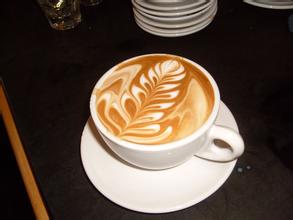Description of Flavor of Dominica Coffee with Fruit Flavor introduction to the degree of Baking of varieties treated with Grinding degree
The Baez regime was overthrown in 1874, but was elected president two years later and finally stepped down in 1878. General Ulysses Errou came to power in 1882, which gradually stabilized the political situation in Dominica, which had been uneasy for many years. During the reign of President Erru, the political stability gave many countries a respite, and the continuous improvement of sugar industry technology caused many European and American immigrants to enter many countries to look for jobs. However, Erru privately used state funds for selfish desires and set up his own royal guard, which gradually increased the country's foreign debt. These caused people's dissatisfaction with his actions, and Errou was murdered in 1899 after the use of high-handed policies was ineffective. Dominica returned to the era of separatist rule after 1902, with reckless domination on one side, so that the treasuries of many countries were completely emptied at that time. As a result, creditors such as France and Europe began to look covetously at Dominica.
In order to prevent Europe from interfering with American affairs and to protect the Panama Canal under construction, President Roosevelt opposed Europe's continued colonization of Latin America with the Monroe Doctrine at that time. Roosevelt put forward his own inference in 1904 to determine that the United States has the right to intervene in Latin American affairs. The United States and Dominica agreed in 1905 that the United States would manage Dominica's customs foreign affairs, and the following year it signed a contract with a number of countries to maintain this obligation for 50 years. It is agreed that the United States has an obligation to use part of its customs revenue to repay Dominica's growing foreign debt.
Santo Domingo is a city with a history of 500 years. Coffee produced by Santo Domingo and Barney, which is almost synonymous with Domiga coffee, is a world-famous high-quality coffee. Its flavor and taste characteristics: fresh and elegant, full particles, excellent acidity, pleasant aroma.
The Dominican Republic is located in the east of the island of Haiti in the West Indies, bordering the Republic of Haiti to the west, the Atlantic Ocean to the north and the Caribbean Sea to the south. With an area of about 49000 square kilometers and a population of 7.1 million, the Dominican Republic and the Republic of Haiti coexist on an island bordering Haiti. Like its neighbours, the Dominican Republic had a history of revolution and poverty, but now it has democratic elections and the country is relatively stable.
In the early 18th century, coffee was introduced to Domiga from Martinique, and fine coffee was produced in the north represented by Hibao and in the south, including Okayabani Santo Domingo. Among them, the coffee produced by Santo Domingo and Barney, which is almost synonymous with domiga coffee, is a world-famous high-quality coffee. Santo Domingo coffee is characterized by freshness, elegance, fullness, excellent acidity and pleasant aroma, so it is worth it. The selection of Dominican coffee is usually done manually. The main basis for selection is according to the fullness of coffee particles, whether it is uniform, and then grade it. Generally speaking, coffee with full and uniform grains is easier to preserve. Only the fullest and most evenly grained coffee beans can be roasted to represent the best and finest coffee in the country.
Unlike coffee produced in Haiti, most of the coffee grown in the Dominican Republic has been washed, which is a symbol of high quality. Miniga Coffee uses a washing method to treat coffee beans, so that the quality of treated coffee beans is more guaranteed. The coffee beans treated by washing method retain more original flavor than the drying method, and the aroma is pure and soft.
Carefully selected in this way, the high-quality coffee of Dominica exudes a faint aroma and gives people a faint fruity aroma with a lingering finish and a smooth and smooth finish.

Important Notice :
前街咖啡 FrontStreet Coffee has moved to new addredd:
FrontStreet Coffee Address: 315,Donghua East Road,GuangZhou
Tel:020 38364473
- Prev

Description of Mexican Coffee Flavor introduction to the taste characteristics of fine coffee beans
As early as 1796, coffee spread from Cuba to the Cordoba region of Veracruz, Mexico. After more than 200 years of development, today's Mexican coffee has many different styles of coffee. At present, there are three world-famous coffee producing areas, namely Chiapas, Veracruz and Oaxaca, where 70% of Mexican coffee comes from. Mexican fever
- Next

Description of Puerto Rican Coffee Flavor with good Compliance and balance introduction to the degree of Baking in the production area of Grinding degree of varieties
Puerto Ricans are the general name of the residents of United States Puerto Rico in Central America and the Caribbean. There are about 3.4 million people (1979). Spanish and English are widely used. More Catholic. The earliest inhabitants of Puerto Rico were Arawak and Caribbean Indians. In 2012, whites of European origin accounted for about 73% of the population, mixed-race people accounted for 23%, and blacks accounted for 4%. There are more than 20,000 Americans and others.
Related
- Detailed explanation of Jadeite planting Land in Panamanian Jadeite Manor introduction to the grading system of Jadeite competitive bidding, Red bid, Green bid and Rose Summer
- Story of Coffee planting in Brenka region of Costa Rica Stonehenge Manor anaerobic heavy honey treatment of flavor mouth
- What's on the barrel of Blue Mountain Coffee beans?
- Can American coffee also pull flowers? How to use hot American style to pull out a good-looking pattern?
- Can you make a cold extract with coffee beans? What is the right proportion for cold-extracted coffee formula?
- Indonesian PWN Gold Mandrine Coffee Origin Features Flavor How to Chong? Mandolin coffee is American.
- A brief introduction to the flavor characteristics of Brazilian yellow bourbon coffee beans
- What is the effect of different water quality on the flavor of cold-extracted coffee? What kind of water is best for brewing coffee?
- Why do you think of Rose Summer whenever you mention Panamanian coffee?
- Introduction to the characteristics of authentic blue mountain coffee bean producing areas? What is the CIB Coffee Authority in Jamaica?

